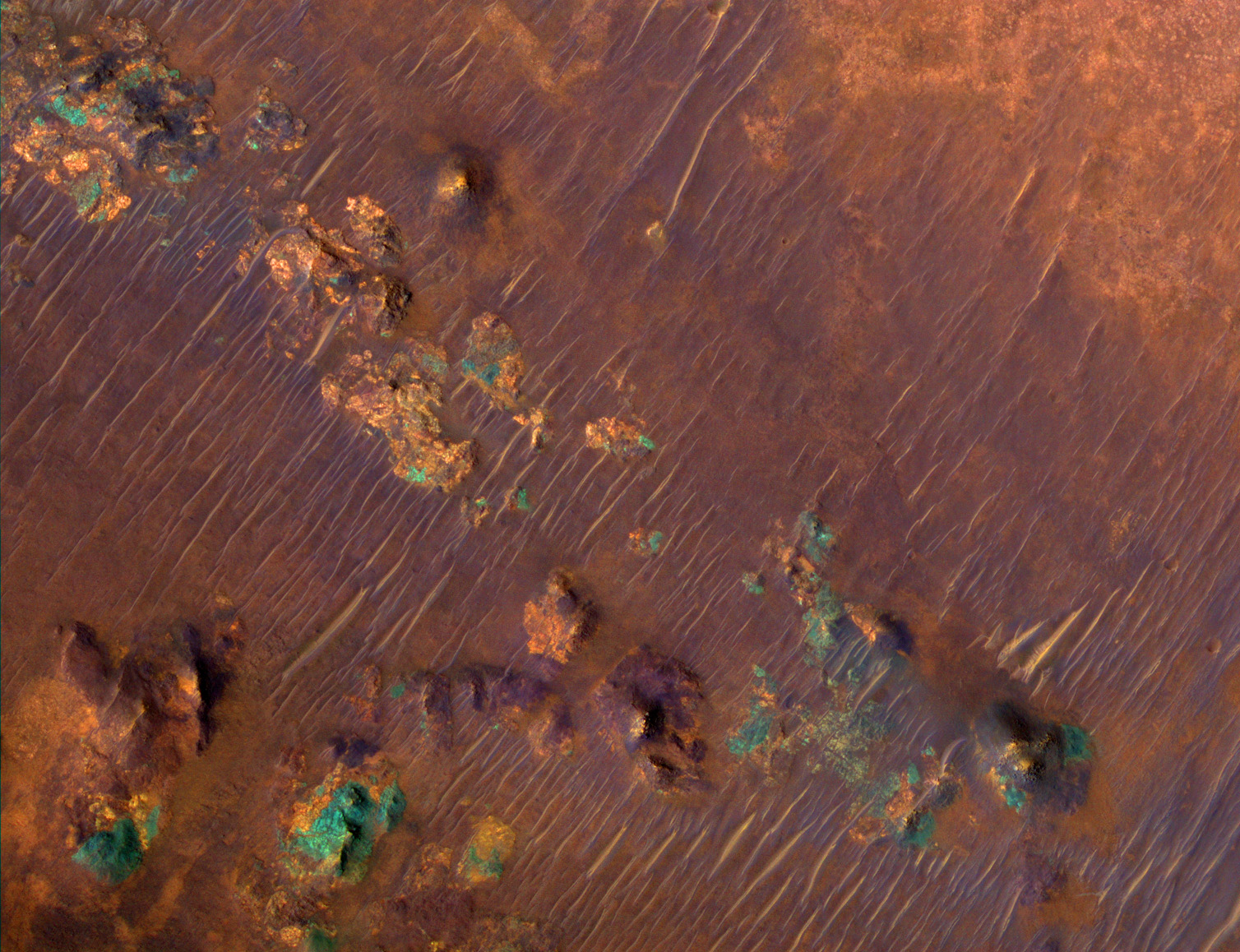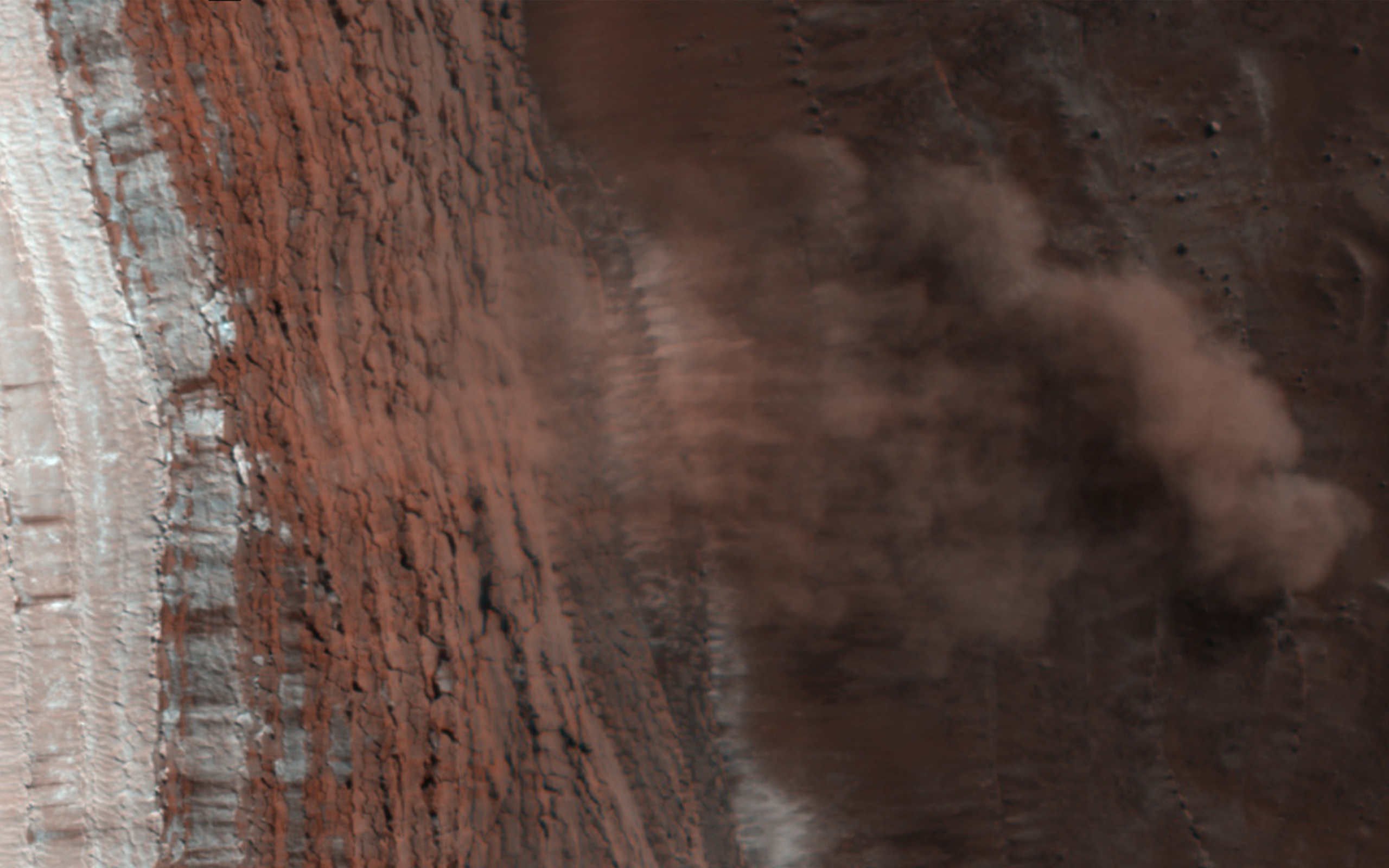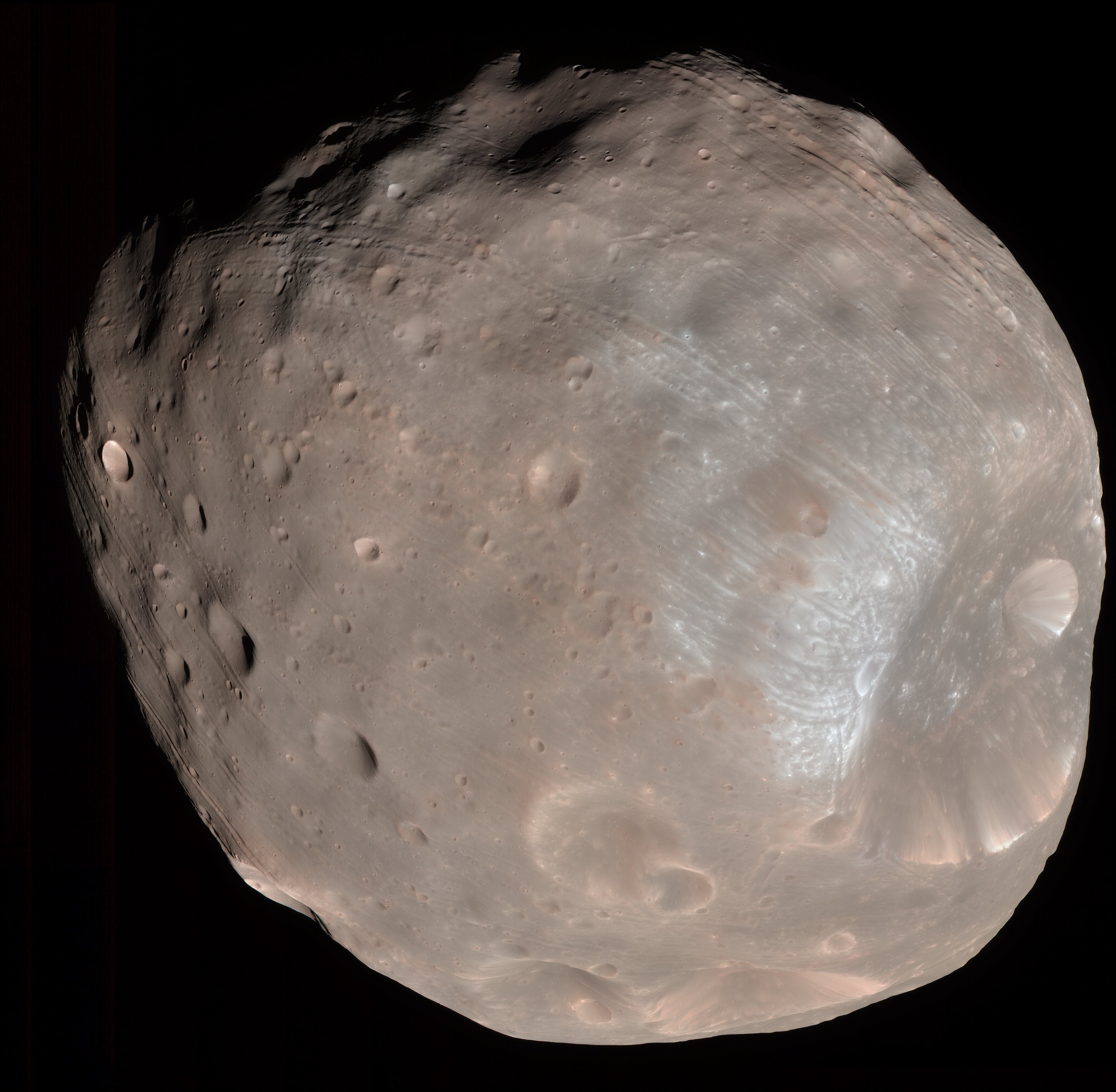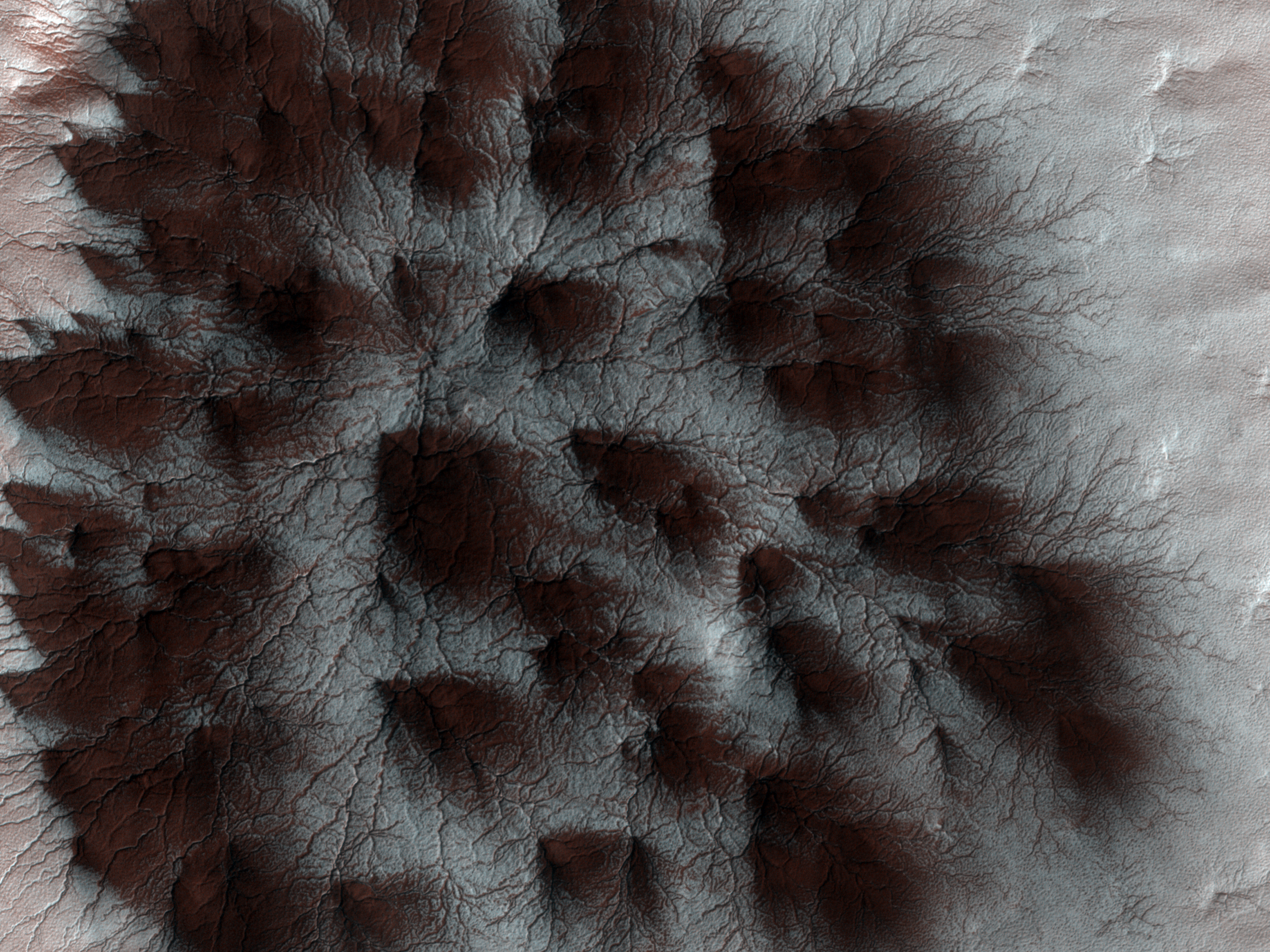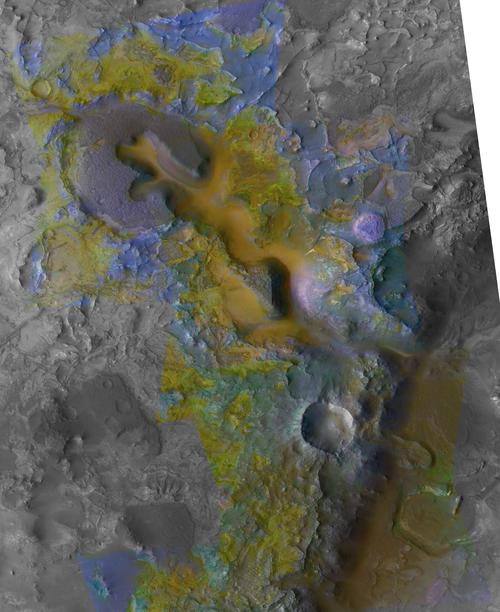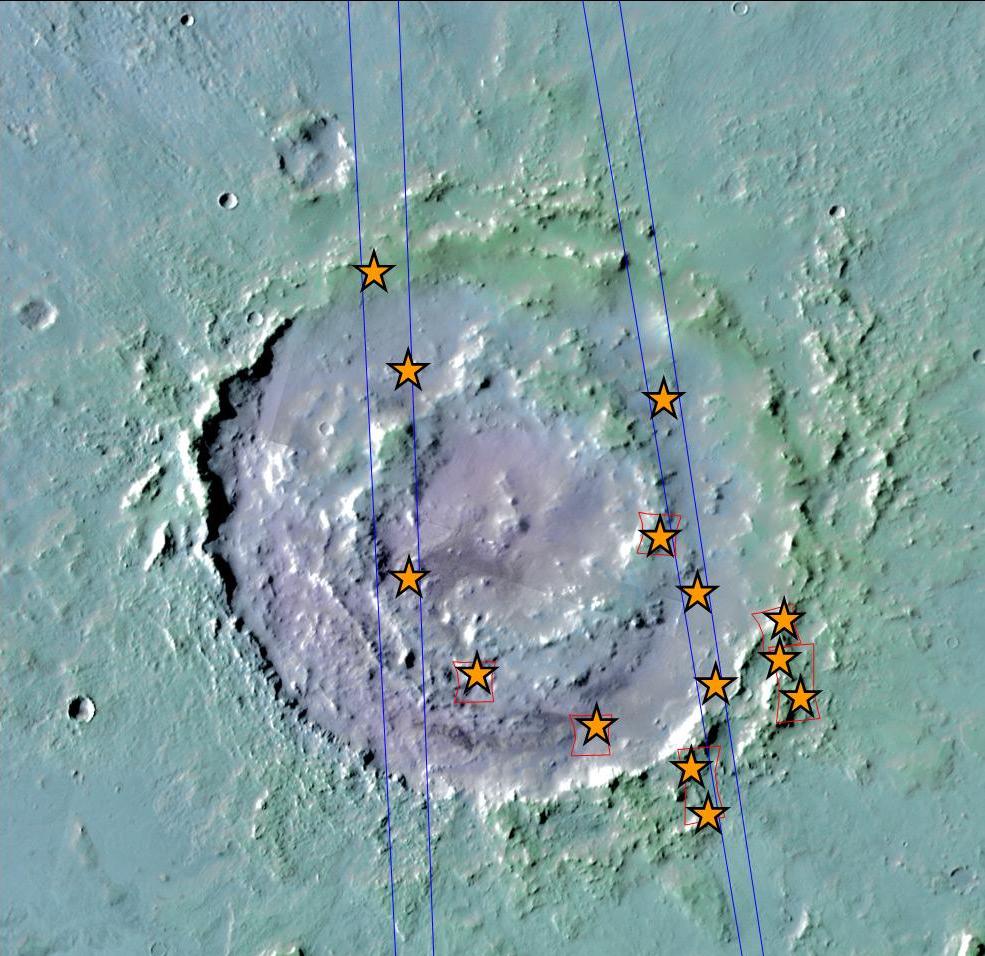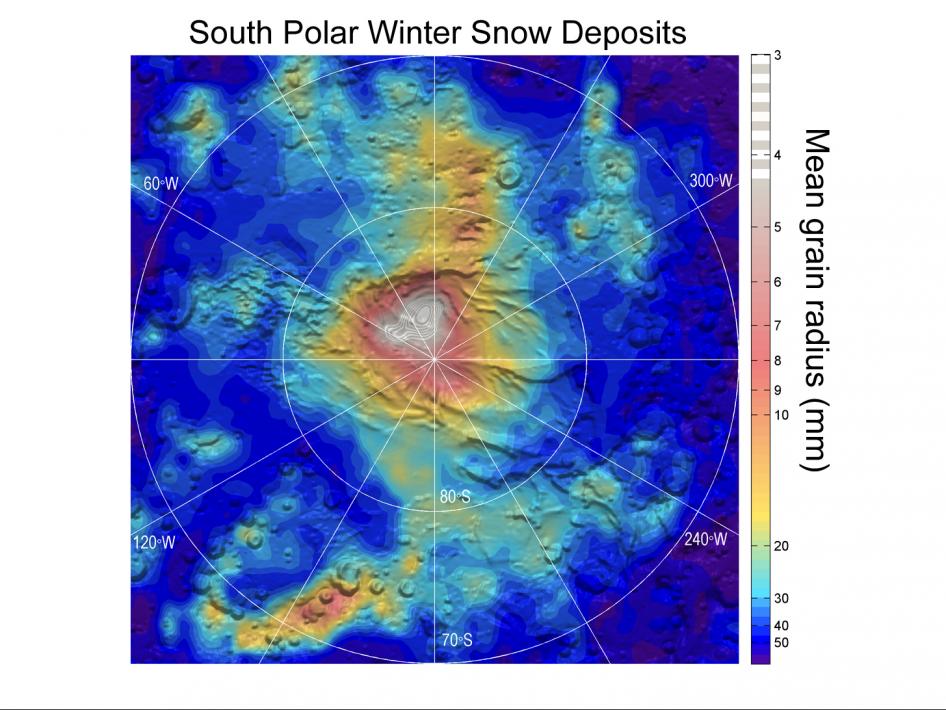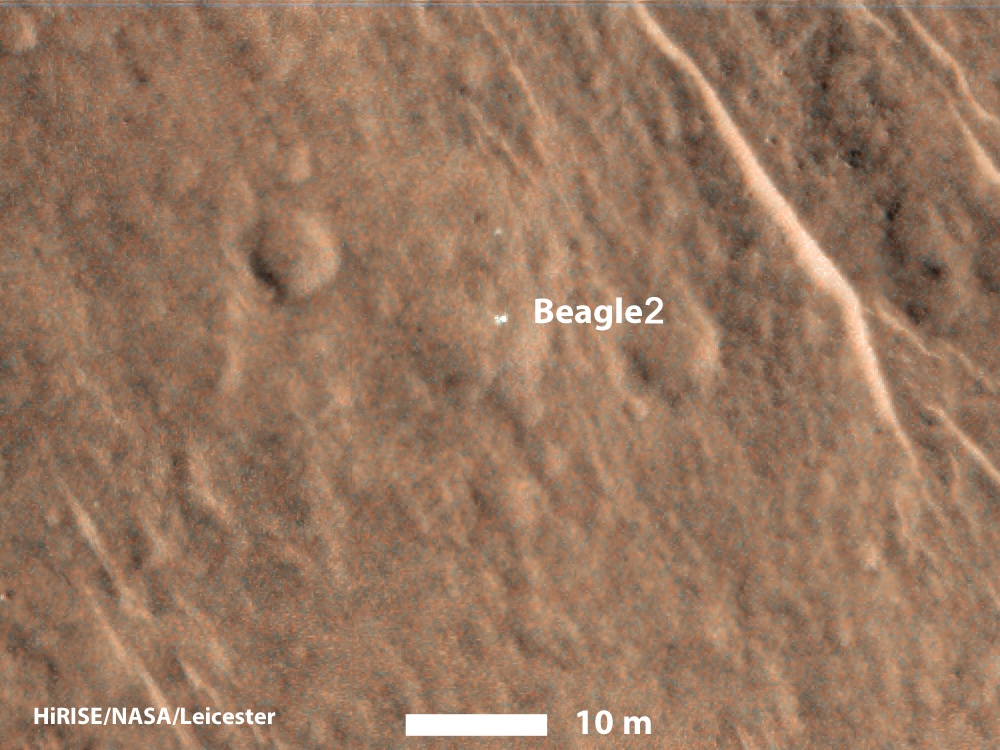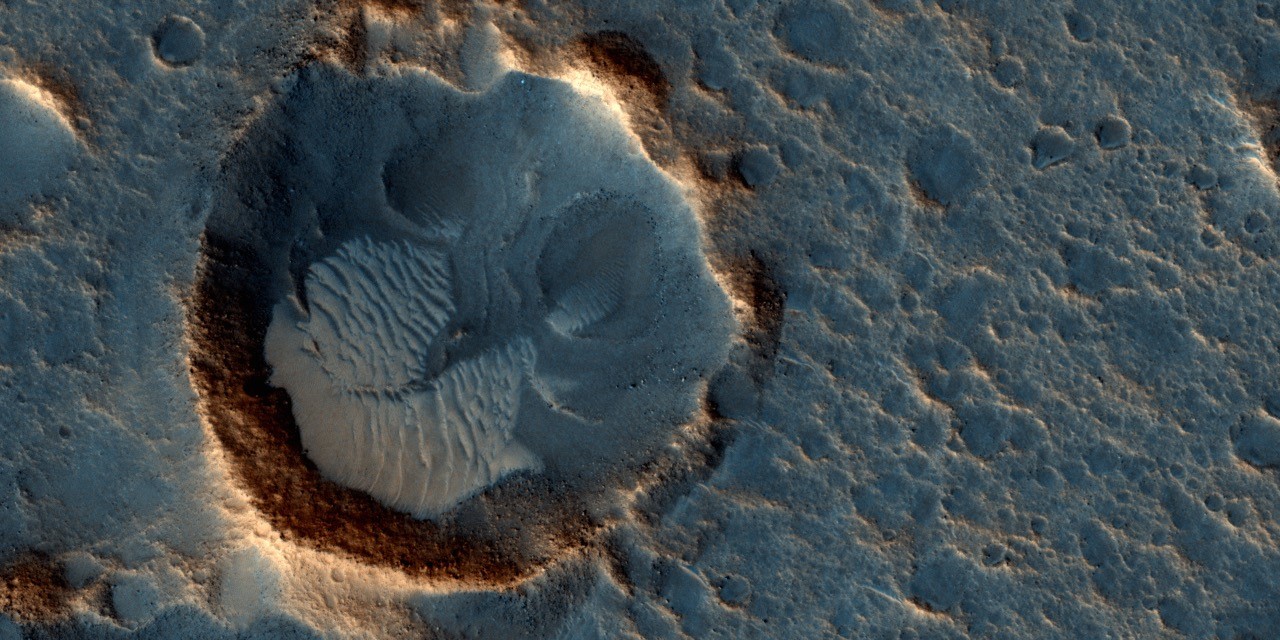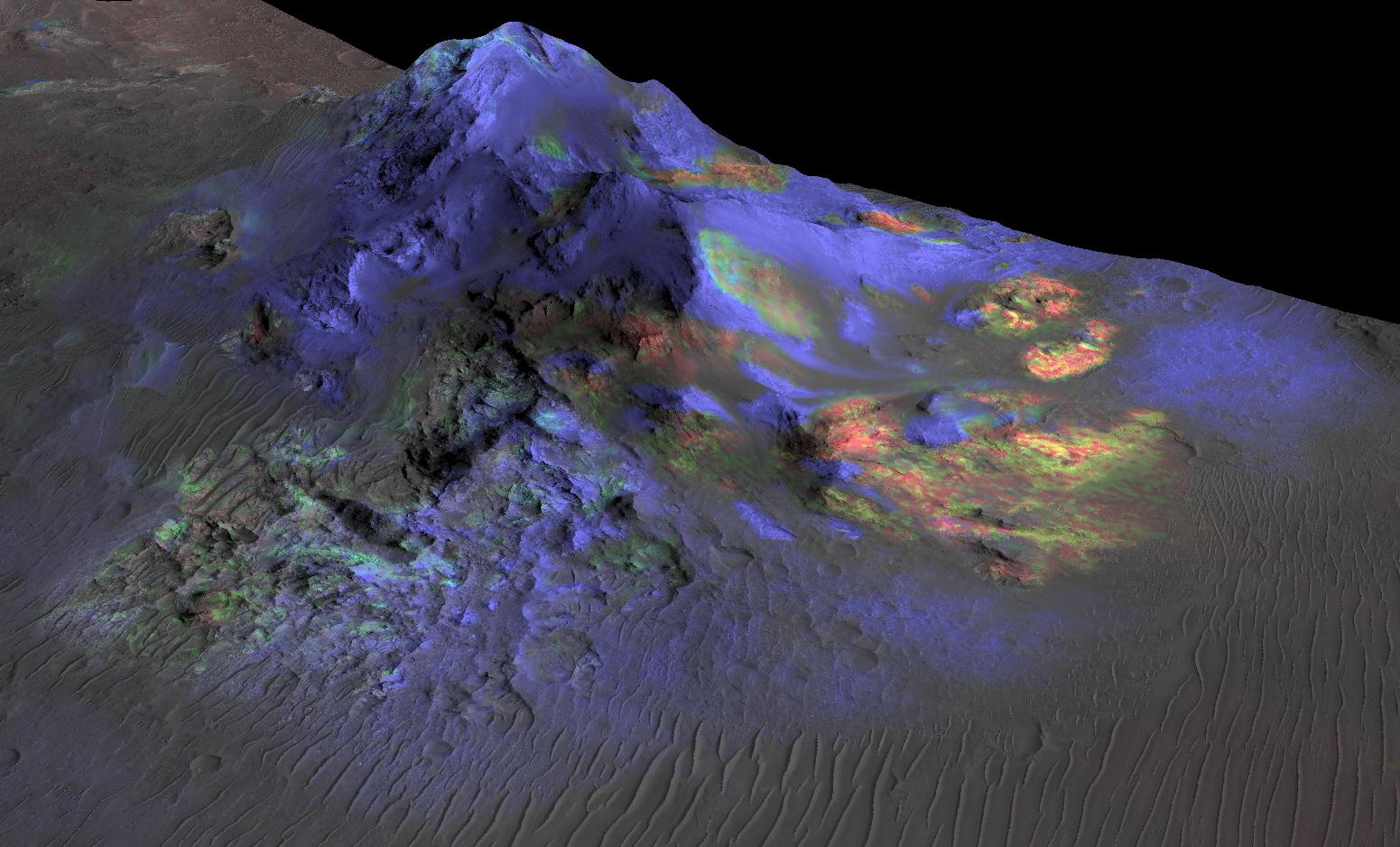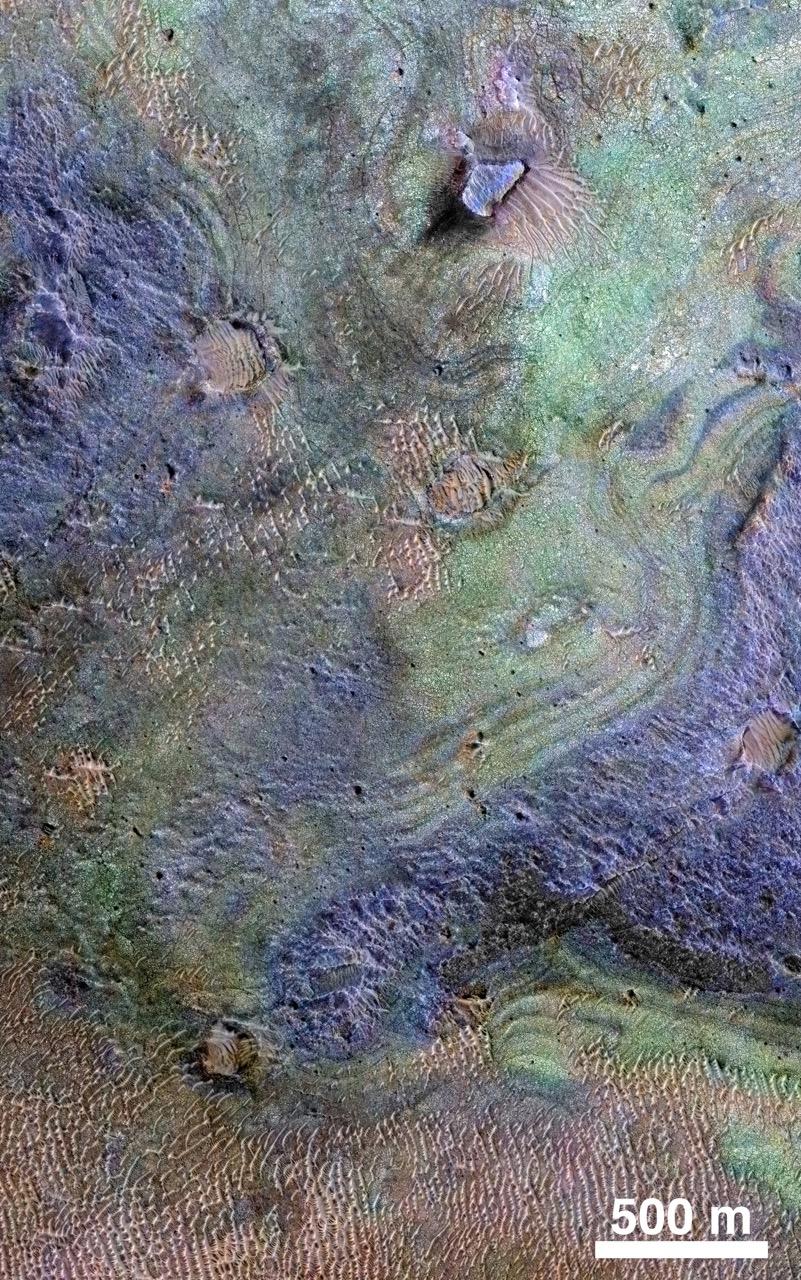Mars Reconnaissance Orbiter: 15 key milestones to celebrate 15 years in space
NASA’s Mars Reconnaissance Orbiter launched from Earth 15 years ago. Here are some of the spacecraft's most fascinating discoveries.

On Aug. 12, 2005, NASA launched the Mars Reconnaissance Orbiter from Cape Canaveral, Florida, on top of an Atlas V rocket. After more than a decade in space, MRO has proven to be one of NASA’s most industrious Martian orbiters, having mapped the Red Planet in remarkable detail. To commemorate its 15th anniversary of being in space, here are 15 memorable milestones from this incredible mission.
1. March 24, 2007: MRO captures an image of the Nili Fossae region
The enhanced color image, taken by the High Resolution Imaging Science Experiment (HiRISE) camera in March 2007, shows an area of the Nili Fossae region. The image was part of a series of experiments to examine more than two dozen possible landing sites for NASA’s Curiosity rover.
2. Feb. 19, 2008: Watching an avalanche
When MRO revisited the layered terrain at the north polar cap in the Martian spring, scientists hoped to study how carbon dioxide frosts evaporate from underlying sand dunes.
It came as a surprise, however, when an image from HiRISE captured no fewer than four separate avalanches thundering down a layered cliff face more than 2,296 feet (700 meters) tall. Further observations confirmed that similar avalanches recur in Martian spring, and are probably triggered when blocks of dust-laden dry ice collapse as frozen carbon dioxide slowly thaws.
3. March 23, 2008: Phobos flyby
The MRO team turned the HiRISE camera away from Mars to image its two satellites, Phobos and Deimos, at the highest resolution yet obtained. The larger of the two moons, Phobos, orbits closer to Mars, circling the planet once every seven hours and 40 minutes.
Seen in the image from 4,200 miles (6,800 kilometers), the potato-shaped moon’s most prominent feature is a crater called Stickney. The curious grooves that appear to radiate from the crater and run parallel with the moon’s longer axis are thought to be stress fractures, caused as Martian tidal forces push and pull on the satellite.
4. Feb. 4, 2009: Spiders from Mars
One of MRO’s most spectacular discoveries is the curious, organic-looking patterns that develop in spring at the edge of the south polar cap. With a resemblance to trees or spiders, these dark patterns — also known as starbursts — form dark tendrils that spread out across the bright, frost-covered terrain.
Breaking space news, the latest updates on rocket launches, skywatching events and more!
It is thought they are formed by sublimation, or the direct transition of frozen carbon dioxide ice into gas. This happens in pockets beneath the surface when gas finds its way to weak points or fissures where it can break out, often carrying dust with it that falls back to the surface. This dust darkens the ice cap, so it absorbs more sunlight and heats up, which continues the cycle.
5. Dec. 18, 2008: Finding carbs
Prior to MRO’s arrival, an important question for researchers was the nature of the water that had clearly run on the planet’s surface in its past. On Earth, water action on rocks converts them into carbonate minerals such as chalk and limestone through weathering, but acidic water tends to dissolve carbonates.
The apparent lack of carbonates on Mars has led scientists to suspect that its ancient waters were acid and hostile to life. In 2008, however, MRO’s mineral imager, Compact Reconnaissance Imaging Spectrometer for Mars (CRISM), discovered the first signs of carbonates exposed at the surface (appearing green in this image of the Nili Fossae canyon system).
6. June 25, 2010: Mars' wet north
Ancient hydrated minerals had already been found in the southern highlands but the northern plains seemed to have a disappointingly dry history. Using the CRISM spectrometer, researchers targeted several craters and identified multiple signatures from hydrated, claylike minerals (such as those shown in the image of Lyot Crater). The crater seems to have punctured through the overlying dry soil to expose an ancient layer below, revealing evidence that watery and hospitable conditions were once global, perhaps 4 billion years ago.
7. Feb. 16, 2012: Twister on the move
The existence of dust devils on the Martian surface had been suspected since the 1970s, but MRO surprised everyone by delivering stunning images of these tornado-like whirlwinds in action. This relatively small-scale dust devil is about 98 feet (30 m) wide and 2,624 feet (800 m) high, but others can grow much larger.
Dust devils scour the Martian surface, clearing it of dust and frequently leaving scribble-like dark trails exposing the underlying bedrock. They are thought to form in the same way as Earth’s dust devils, when a pocket of warm air is trapped at the surface by overlying cold air and is then finally allowed to rise, creating a spinning updraft.
8. Sept. 11, 2012: Winter wonderland
During the southern-hemisphere winter of 2006 to 2007, the MRO uses its Mars Climate Sounder to study cloud formations over the south polar ice cap.
In 2012, a team of scientists announced a new analysis of this data, confirming the presence of a huge carbon dioxide snow cloud, some 310 miles (500 kilometers) across, hovering over the south pole. The cloud, made of frozen “dry ice” crystals, would deposit snow on the ground in the right conditions, perhaps explaining how the south pole grows from a small residual ice cap that persists through summer, to an extensive snowcap covering a large amount of the southern hemisphere.
9. Feb. 26, 2014: Icy revelations
MRO’s high-resolution cameras have discovered many unsuspected features on Mars, including unusual terraced craters like this one. At first glance, its bullseye structure makes it look as though a second meteorite has struck the exact center of an earlier crater, but the reality is rather different.
Terraced craters form when an impact penetrates through layers of material that have different strengths — in this case, a relatively weak sheet of ice just below the surface has been hollowed out to form the crater’s wide outer walls, while the much tougher rock beneath has only been excavated at the point of impact itself.
10. Jan. 16, 2015: The spacecraft locates the Beagle 2 lander
Beagle 2, a lander released by the Mars Express Orbiter on Christmas Day in 2003, was uncovered by MRO with its solar arrays partially deployed on the surface of Mars.
Related: UK's Lost Beagle 2 Mars Lander, Missing Since 2003, Found in NASA Photos
11. May 17, 2015: MRO snaps a “Hollywood movie site”
Using the HiRISE camera, the Mars Reconnaissance Orbiter snaps the region called Acidalia Planitia, which is featured in the bestselling novel and movie, "The Martian" (Del Rey, 2015).
12. June 8, 2015: Glassy debris found
When meteorites hit a planet, the shock waves heat and compress the surface, often fusing sandy grains together to create glass. Impact glass is common on Earth but is hard to detect on Mars as its spectral signature is indistinct. In 2015, researchers found a way to prove that glass is widespread around many meteorite craters, such as Alga, the glass shown here in green. Impact glass can preserve traces of organic chemistry on Earth, so could assist in the search for life on Mars.
13. Sept. 2, 2015: Mars' lost atmosphere
After MRO’s confirmation of carbonate minerals on Mars in 2008, the hunt was on to discover larger deposits. The weathering process that creates carbonates also locks away carbon dioxide from the atmosphere, and so weathering could have played a significant role in thinning the Martian atmosphere.
In 2015, scientists identified the largest carbonate region so far in Nili Fossae — exposed carbonates are colored green in this composite of CRISM data and a HiRISE image. The presence of large carbonate deposits supports the idea that ancient surface water was amenable to the development of life.
Related: Mars' missing atmosphere likely lost in space
14. Sept. 28, 2015: Water at last!
Following the discovery of "recurring slope lineae" in 2011, evidence for water on the surface of Mars remained frustratingly elusive. However, many more lineae were subsequently discovered at similar mid-southern latitudes. In 2015, scientists use the CRISM spectrometer to find the next best thing — the distinctive signature of freshly formed hydrated minerals (chemical compounds with water locked into their structure).
The minerals were found in association with various lineae, including those in Hale Crater (which is pictured here), and the signals are at their strongest where the lineae are widest and darkest. They are thought to be formed by perchlorate salts, which could act as natural antifreeze and keep water flowing at temperatures as low as minus 94 degrees Fahrenheit (minus 70 degrees Celsius).
15. March 29, 2017: 50,000 orbits completed
In its 50,000 orbits of Mars the MRO took 90,000 images covering around 99% of the planet. And it has observed more than 60% of Mars more than once, gathering over 300 terabytes of scientific data.
Additional resources:
- NASA's Prolific Mars Orbiter Completes 60,000th Lap of Red Planet
- Perseverance: NASA’s Mars 2020 rover
- The Tricky Task of Aerobraking at Mars
This article was adapted from a previous version published in All About Space magazine, a Future Ltd. publication.
OFFER: Save at least 56% with our latest magazine deal!
All About Space magazine takes you on an awe-inspiring journey through our solar system and beyond, from the amazing technology and spacecraft that enables humanity to venture into orbit, to the complexities of space science.

All About Space is where stunning images combine with accessible and authoritative text to educate and inspire readers of all ages while taking them on a spectacular journey through the Solar System to the known limits of the universe. Characterized by quality and accessibility All About Space is a brand dedicated to delivering expert commentary on the latest cutting-edge research, technology and theories in an entertaining and visually stunning way.
Get fantastic offers by subscribing to the digital and/or print edition now. Subscribers get 13 issues per year!

